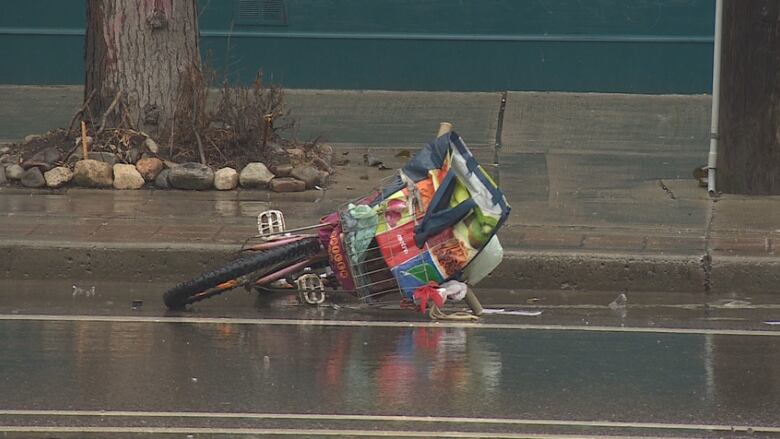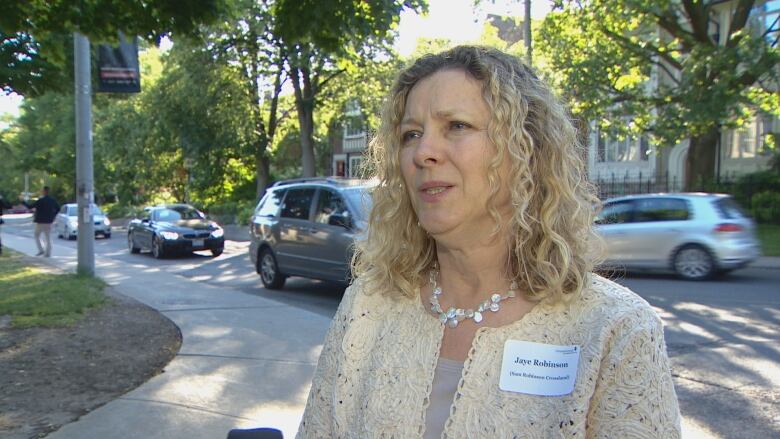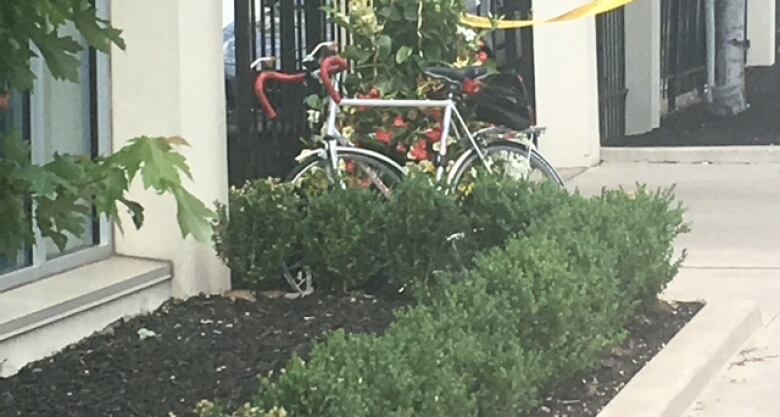Does Toronto have an effective plan to reduce road deaths?
After a startling spike in road injuries, experts wonder if the city's proposed strategy is enough

On July 2, it was a 21-year-old pedestrian hit by a black Honda Civic. On July 5, it was a 71-year-old cyclist who swerved to avoid a turning car. On July 7, it was a 33-year-old struck while trying to cross Eglinton Avenue East.
On one day last week July 4 20 pedestrians and cyclists were hit in collisions.
Torontonians arewalking and cycling on more dangerous roads. While the overall number of collisions has remained relatively steady over the past decade, the rate of fatalities hasincreasedover the past three years; 2015 saw a 10-year high.
- Beefed up road safety plan approved by city hall committee
- Toronto plan to improve road safety 'very timid,' advocacy group says
As the population ages and increases, so too does the pressure on our roads.
"Toronto is not a safe city to walk or to bike in. It's completely uncivilized that in one daywe had approximately 20 people hit and nothing happened," says Gil Penalosa, an urban affairs advocate who founded the Toronto-based non-profit organization 880 Cities.
Next week, city council will bevoting on a new road safety plan. The question, say many observers, is whether it will do enough to reduce the rate of injuries and deaths.
Vision Zero
The plan is based on a three-pronged approach, explains Roger Browne,manager of the city's traffic safety unit:
- Engineering, or changingthe way the roads actually work reducing speed limits at key locations, for instance.
- Education: emphasizing theimportance of road safety through awareness campaigns, improving road signs and other public engagementtools.
- Enforcement by police to ensure that everyone abides by the rules.
When the plan was first introduced it called for a 20 per cent reduction in fatal and serious injury collisions in the next 10 years a goal many advocates and politicians lambasted as being far too timid.
Coun. JayeRobinson, who is spearheading the road safety motion, along withthe mayor, quickly changed that goal; the proposal has now been amended toaim for zero fatalities.

In fact, the plan is inspired by a growing movement called Vision Zero. Launched in Sweden, more than a dozen cities in North America have now adopted some version of the policy. (Edmonton is the only Canadian city to have done so thus far.)
Vision Zero "redefines the goal from preventing crashes to preventing deaths and serious injuries," explains Zach Vanderkooy, deputy directorof the Vision Zero Network.It's based on the idea that human error is impossible to avoid; no matter what, collisions will happen. Instead, the focus shifts to minimizing the damage when the inevitable occurs.
How do you do that?
By changing the system so that it forces people to slow down, Vanderkooy says.
"The 'easy'actions,like doing education campaigns and adding lighting are nice to have," he says. "But they won't save anywhere near as many lives as infrastructure changes that actually make it necessary to travel at [lower] speeds. When you look at the data, speed is the single biggest factor in whether someone lives or dies in a traffic crash."
The cost of increasing safety
This isn't just a question of reducing speed limits it's a matter of how an entire city is designed.
Todd Litman of theVictoria Transport Policy InstituteTrafficsays that while Toronto's plan is on the right track, "there is much more than can be done to increase pedestrian and cycling safety, [by] using roadway redesigns that expand sidewalks and crosswalks and reduces motor vehicle traffic speeds."
Basically, to get drivers to go more slowly you can't just change the laws you need to change the way the roads themselves are built.
Setting aside the political issues involved road-slowing measures are often contentious there's thematter of money.

The initial road safety plan the one with a target of reducing death and serious injury by 20 per cent required approximately $40 million in new spending over the next five years.Robinson has asked city staff to look for additional funding sources before council's meeting, given the new and much more ambitious goal of zero deaths,but admits it won't be as much as she'd like.
What we're hoping is that through some creative budgeting and contingency funds ... that we can accelerate the program.- JayeRobinson, city councillor and public works committee chairwoman
"What we're hoping is that through some creative budgeting and contingency funds ... that we can accelerate the program," the public works chairwoman told CBC News. This will include looking at municipal budgets, but "my hope is that there is going to be some money that we can pursue from the federal government," she said.
'It is just ridiculous'
For observers like Penalosa, this is the crux of the problem.
"I think it is justridiculous when the mayor and the councillor come out and say 'Oh no, we're going to change from 20 to 100 per cent' [but don't]increase the budget by at least fivetimes."
- 5 cities Toronto could copy to improve road safety
- Toronto traffic fatalities at highest level in 5 years
One specific action the city could take, Penalosasays, is accelerating its plan to expand the cycling network, and build it over two years instead of 10.
"With concrete goals, these things could be avoided."
Litman agrees, saying that governments across the country need to shift their budgets away from cars, as more and more people turn to other forms of transportation: "Roadway redesigns require money and road space. Walking and cycling suffer from a lack of dedicated funding."
Robinson concedes the new plan is "far from perfect," but he says that, most importantly, the city is at least creating a blueprint.
"We've never actually had a plan before, muchless a comprehensive one."












_(720p).jpg)


 OFFICIAL HD MUSIC VIDEO.jpg)
.jpg)



























































































